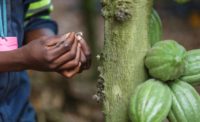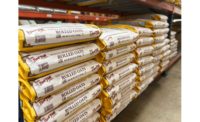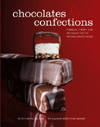Candy Industry Senior Editor recently talked to Nathalie Sadin, corporate technical engineer, BENEO, Parsippany, NJ, about sustainability in the confectionery industry.
Liz Parker: How has BENEO been working on exceeding sustainability initiatives for candy and confectionery manufacturing?
Nathalie Sadin: Consumers have become increasingly aware of how environmental factors contribute to their choices in all categories, including confectionary. A recent survey on behalf of BENEO showed that 3 in 4 consumers globally find it important how food is made and what is in it while equally being worried about the impact on the environment.[1] Therefore, candy and confectionary manufacturers, like others, are assessing their suppliers in terms of sustainability commitment. BENEO’s ingredients are all derived from natural sources and are plant-based. We also valorize the entire raw material for functional ingredients or co-products for both food and animal feed. At the same time, BENEO aims to reduce its overall CO2 emissions.
For example, in BENEO’s chicory root fiber plant in Pemuco (Chile), we have reduced our specific energy consumption by 35%, while ensuring a secure supply for food manufacturers by increasing capacity. BENEO’s prebiotic chicory root fibers, Orafti® Inulin and Oligofructose, are highly versatile in many confectionary applications while adding both technical and health benefits to end products, including fat and sugar reduction as well as added fiber. This allows candy and confectionary producers to improve the nutritional profile of their products without compromising on taste and texture. For instance, chicory root fibers enable the development of sugar-reduced chocolate, with nice texture and good snap, as well as sugar-reduced gummies, chewy candies or cereal bars that deliver a pleasant taste.
BENEO’s rice ingredients can also be used successfully in confectionary. For example, rice starch offers a high level of whiteness and is a proven alternative to titanium dioxide in applications such as confectionary coatings, chewing gum, or chocolate lentils. With its small granule size, the clean label ingredient also easily smoothens rough surfaces of confectionary coatings during the production process. BENEO has made significant commitments in its Wijgmaal (Belgium) plant, which produces rice derivatives, to reduce carbon emissions associated with the inbound transport of rice from the harbor to the plant by 20% annually as well as to expand its production by 50% while keeping water consumption at previous levels.
In addition, BENEO’s sugar replacer Isomalt, derived from beet sugar, offers candy manufacturers another advantage. Thanks to the ingredient’s low hygroscopicity, it virtually absorbs no moisture at room temperature or relatively high humidity. In hard-boiled candy, for example, this technical property not only minimizes stickiness during forming, cutting, and wrapping but also prevents the end products from sticking together, eliminating the need for individual packaging materials and also guaranteeing a longer shelf life.
LP: How did BENEO transform its Chilean plan to reduce energy consumption by 35%? What made BENEO want to take on this project?
NS: At BENEO, we are convinced that ensuring reliable and consistent delivery to our customers, needs to go hand in hand with taking steps toward more sustainable and environmentally friendly production processes. That’s why for every investment BENEO makes, including the capacity increase for prebiotic chicory root fibers in the Pemuco (Chile) plant, the highest level of energy efficiency is applied.
Therefore, BENEO’s 30% chicory root fiber capacity increase was accompanied by steps that allow us to reduce specific energy consumption by 35%.
First, BENEO conducted an analysis of the entire production process at the Pemuco plant in Chile to identify any areas where energy efficiency could be improved. Based on these findings, the company has upgraded existing processing equipment and invested in new technology, such as new evaporation systems, which will not only reduce the energy required but also ensures that the energy is used in the most efficient way possible. This investment into new technology also allows for improved process continuation as it means equipment can be cleaned without interruption of the overall process, which in turn results in further significant energy savings.
LP: How does BENEO use locally sourced ingredients?
NS: BENEO actively supports community causes and values its farming community through long-term partnerships. For example, BENEO sources chicory roots from local farmers in close proximity to its plant in Pemuco, Chile, to produce the prebiotic chicory root fibers Orafti Inulin and Oligofructose. While these inulin-type fructans naturally occur in various plants and vegetables, the chicory root is a particularly rich source.
Chicory root fibers belong to the very few proven prebiotics according to the International Scientific Association for Probiotics and Prebiotics (ISAPP) and are the only proven plant-based prebiotics. They support the selective growth of beneficial bacteria in the gut[i] and offer health benefits related to bowel function or weight management, among others. In addition, they can reduce the glycemic response of foods by replacing sugar or other high-glycemic carbohydrates.
Apart from their nutritional benefits, the natural and non-GMO chicory root fibers offer a whole range of technical properties making them easily applicable to many different foods, including cookies, chocolate, chewy candies, or gummies. For example, they allow the reduction of sugar content while enriching the product with prebiotic fibers.
LP: Can you describe how BENEO uses water transportation in its Belgium plant?
NS: BENEO invested half a million Euros (about $542 thousand USD) in waterway transport to reduce its reliance on road transport. The project included increasing unloading capacity at the company’s rice ingredient plant in Wijgmaal, Belgium, allowing BENEO to transport two-thirds of its cargo by barge each year. This has reduced carbon emissions associated with the inbound transport of rice from the harbor to the plant by 20% annually.
The Wijgmaal plant has a heritage in waterway transport that stretches back to 1856 when barges were first used to transfer Asian imported rice from the Belgian ports to the factory. In the intervening years, road vehicles took over as the main mode of transport. However, BENEO identified barge transport as a more sustainable logistics platform and thus was a focus for this investment.
Prior to this investment, one-third of the rice processed by the Wijgmaal plant was being brought in over water by one barge completing 45 cycles per year. The remaining freight was making about a 200-mile journey from and to the ports by road. However, the docking station was the bottleneck that precluded higher volumes from being transported by water.
Following BENEO’s investment in higher capacity unloading equipment and a joint project with De Vlaamse Waterweg nv[2] to reconstruct the quay, the docking station can now accept two barges, rather than one. The new unloading system shifts more than double the volume of rice per hour than before, so that a barge can be unloaded in 16 hours as opposed to three days.
This allowed BENEO to charter a second barge so two-thirds of the rice used by the facility is now received by barge and just one-third by truck.
By doubling the volumes transported over water, BENEO has halved the number of truck movements to and from Wijgmaal each year. This has resulted in a 20% annual reduction in CO2 emissions associated with the inbound transport of rice from the harbor to the plant.
The upgrading of BENEO’s barge freight capabilities also dovetails with production expansion plans for the Wijgmaal plant. A 50 million Euro (about $54 million US) investment has increased production capacity by 50% enabling BENEO to match growing rice starch demand driven by the natural and clean label trends.
With the opening of the new rice starch production line in October 2022 and the corresponding capacity increase, BENEO’s water consumption at the Wijgmaal site stays the same. This is possible thanks to a two-step process of cleansing. Initially, contaminants are separated from the used water by an evaporator. The condensate is, in turn, purified in a second step, which results in water of drinking quality.
LP: Any other sustainability initiatives that BENEO is undertaking, such as its Isomalt sugar replacer enabling hard candies that don't need to be wrapped?
NS: In its Belgian chicory root fiber plant in Oreye, BENEO has embarked on a long-term program to promote biodiversity in the vicinity of the production site. In collaboration with not-for-profit environmental organizations Natagora and Natagriwal, BENEO is transforming a former settling pond and the surrounding area into a sanctuary for wildlife, including rare birds, beavers, bats, deer, and frogs. The project will contribute to the protection of indigenous and endangered species in Wallonia, while at the same time enriching the local community.
For several years, BENEO’s corporate social responsibility (CSR) program "Orafti Emprende” in Pemuco, Chile, has supported small business founders in the commune of Pemuco and even managed to win a regional CSR award along the way. The start-up initiative helps people from the local community to implement their business ideas mainly by providing education and training. The winning entrepreneurs are then awarded a financing contribution.
In 2022, small business owners and winners from previous years applied in order to grow and scale their current businesses. Due to the pandemic, these entrepreneurs were trained in virtual classes; for example, in the field of marketing, finance, and sustainability. Among the winning businesses are a beekeeper, a bakery, and an apple vinegar producer.
[1] BENEO Global Plant-Based Survey 2021 - Insites Consulting conducted an online quantitative survey in July 2021 in Spain, France, Germany, Poland, UK, US, Brazil, Australia, China and Russia: min. 1000 consumers/ country = 11,990 consumers in total.
[2] The Vlaamse Waterweg nv is an agency of the Flemish government that manages the waterways in Flanders.
[i] Nagy DU, Sándor-Bajusz KA, Bódy B, Decsi T, Van Harsselaar J, Theis S & Lohner S (2022) Effect of chicory-derived inulin-type fructans on abundance of Bifidobacterium and on bowel function: a systematic review with meta-analyses. Critical Reviews in Food Science and Nutrition. Published 14 July 2022, DOI: 10.1080/10408398.2022.2098246










